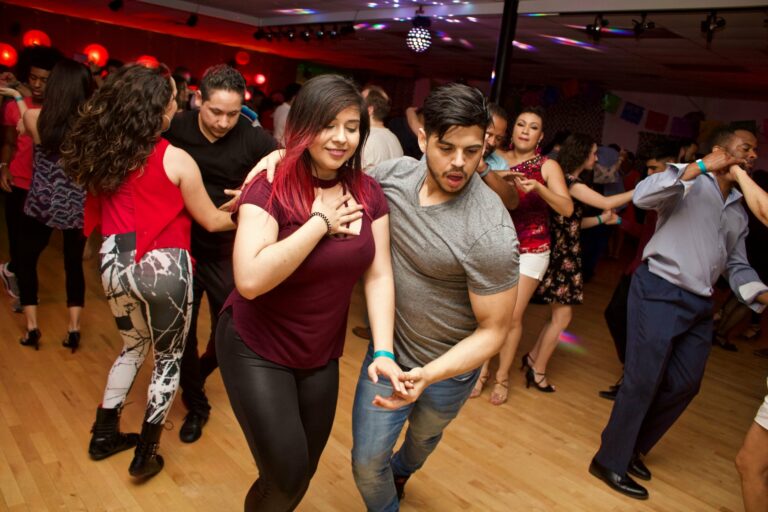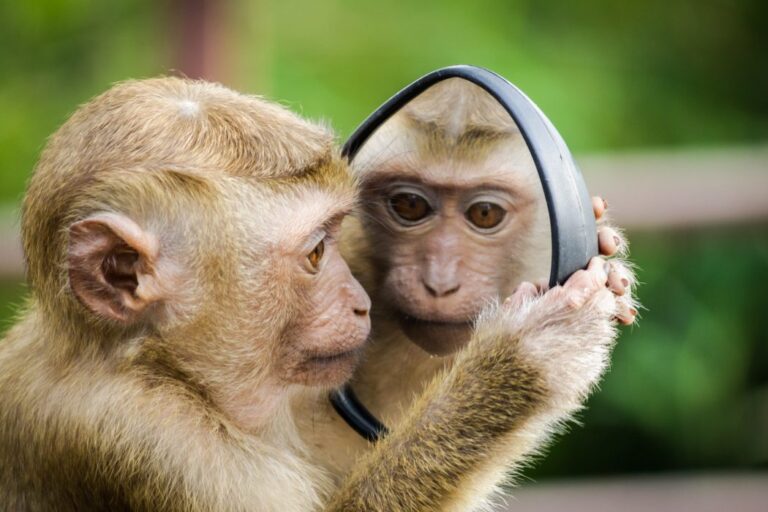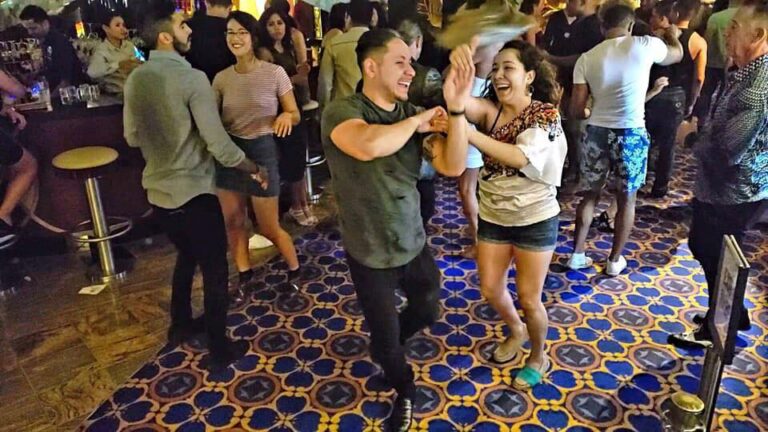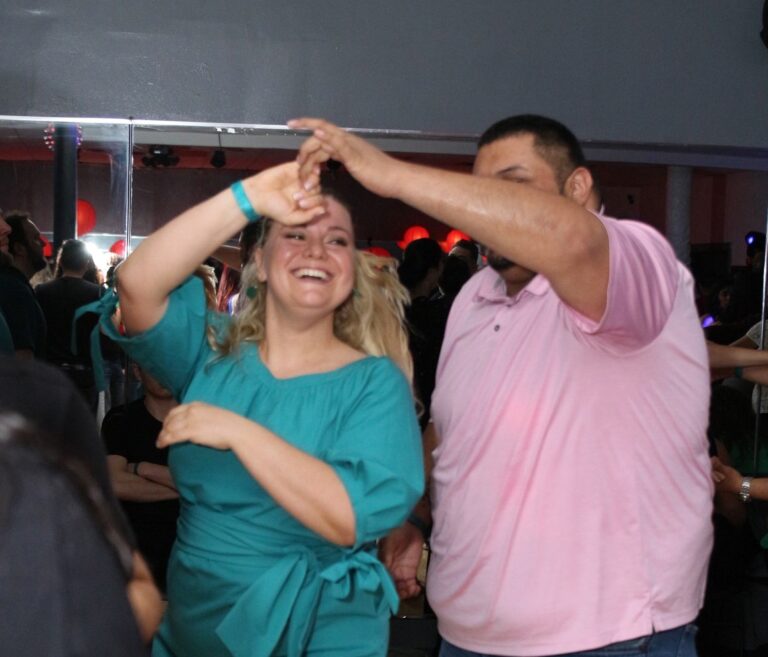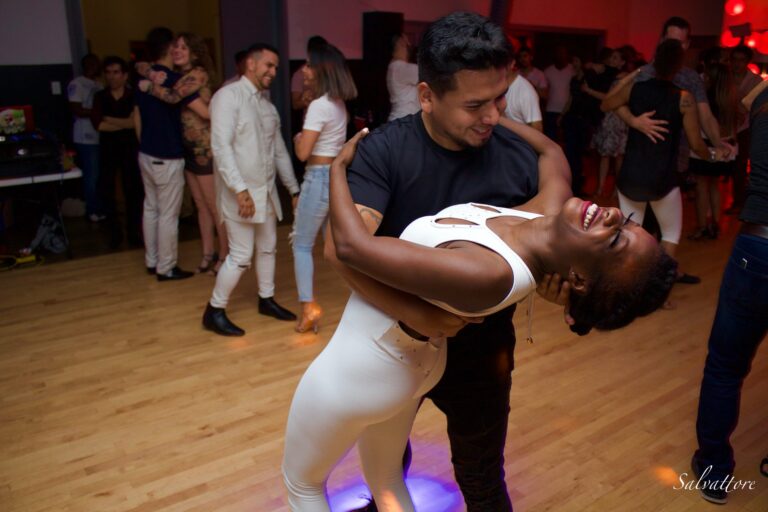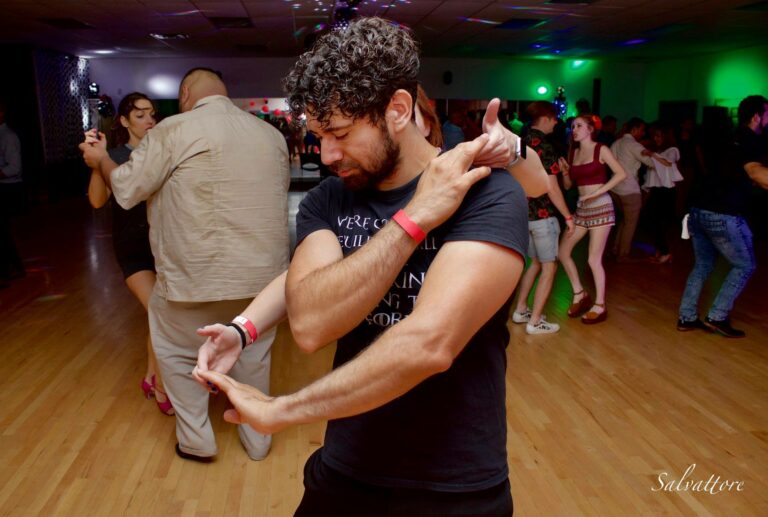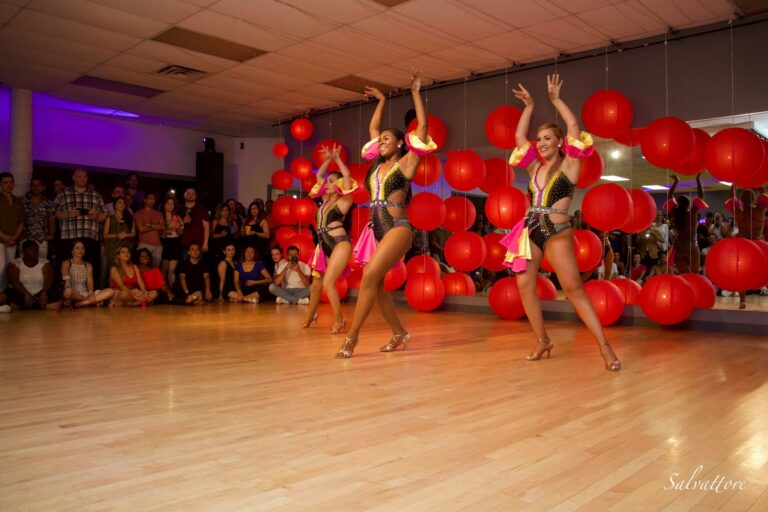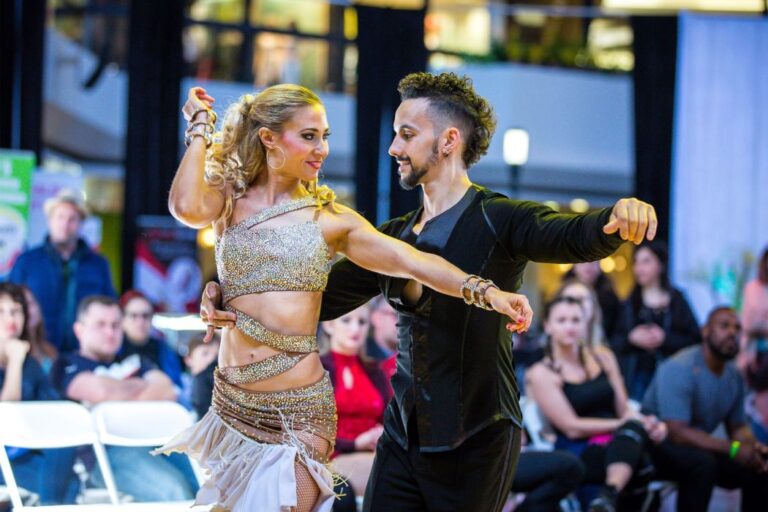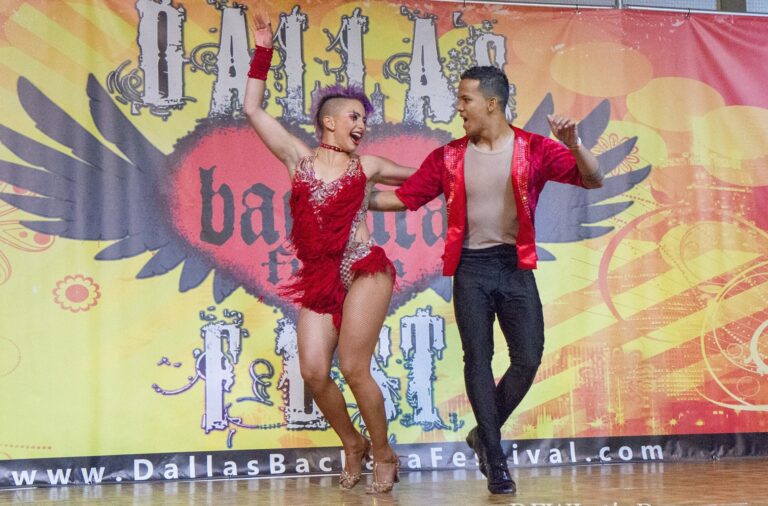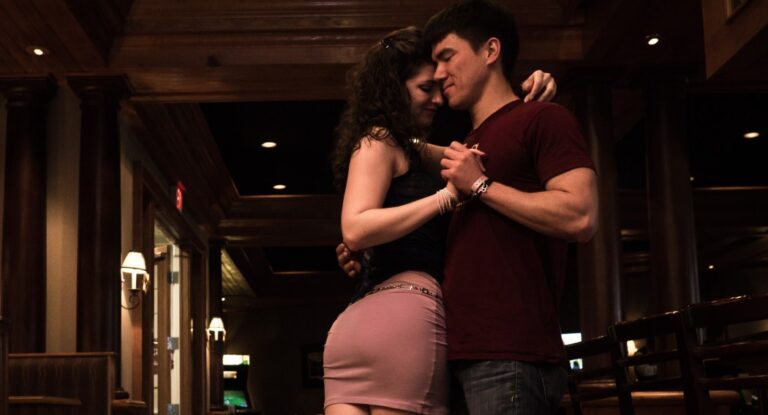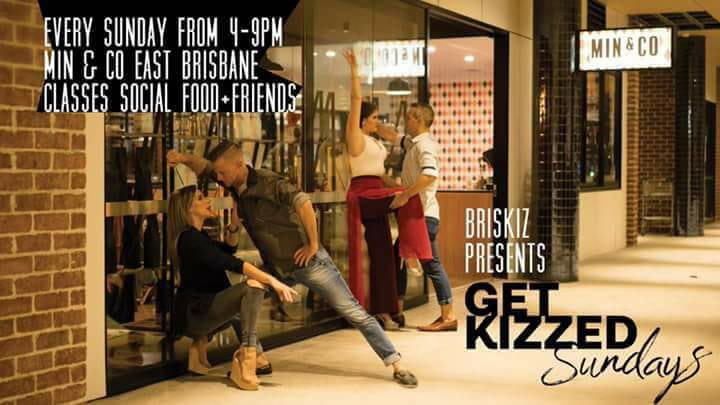What if I told you the secret to enjoying dancing more was inside you? Not in improving your technique or making the right friends or going to the best festivals, but within you right now?
It’s a bold claim, but I believe it! And this first installation in my newest series is all about knowing yourself. In the dance context, that’s not just identifying what kind of music you like or which style you prefer, but gaining self-knowledge on a deeper level by exploring your personal dance boundaries.
Picture this: you’re dancing with a good friend who always leads fun, creative moves. You’re moving quickly through various spins and dips and at some point start to feel anxious and somehow unsafe. Something’s bothering you, but your friend isn’t doing anything wrong…
Or imagine this: you finally got your chance to dance with one of the star dancers. You’re on fire, love the music, doing awesome with great connection and technique—but then this dancer touches the back of your neck and you feel weird. You shake it off and keep going, but a few moves later, it happens again. You feel uncomfortable, but it’s not like you’re being molested….
Understanding Dance Boundaries
Everyone has boundaries, whether you are conscious of them or not. There are many kinds of boundaries, but they all come back to helping you stay happy or healthy. Physical boundaries outline what kind of proximity or contact is all right for you. Emotional boundaries help you separate your emotions from a sense of responsibility for others’ emotions. Professional boundaries protect you from overload and burnout while taking care of a patient’s, student’s, or customer’s needs.
So what is a dance boundary? Essentially it’s a personal marker that when approached, makes you uncomfortable, and when crossed, causes you harm.
A good way of visualizing boundaries is with the traffic light metaphor. Green represents a feeling of enjoyment, interest, and enthusiasm. So when you’re enjoying a dance, you’re in the green zone. Yellow (or orange, depending where you’re from!) represents uncertainty, slight anxiety, confusion, or concern. You are approaching or at a boundary when you are in the yellow zone. When you start to feel uncomfortable or worried about what might happen next, it’s a warning that you have a boundary to pay attention to. Red represents discomfort, pain, fear, or distress. You are in the red zone whenever you go past your boundary—and you can take that as the stoplight for that dance!
Unfortunately if we don’t know our boundaries, we can end up spending way too much time in the red zone, where we are too distressed or afraid to do anything about it. That can drain us of our enthusiasm and make going out to dance seem tiring or unpleasant.
y increasing our self-knowledge and self-awareness, we can become sensitive to when something in the dance brings us into the yellow zone. That’s when we are best able to take action to change something. When we know our boundaries, we can spend much more time in the green zone enjoying our dancing!
Boundaries vs. Rules
I think it’s important to separate boundaries from rules. Boundaries are indicators for yourself. They help you decide to act or remove yourself from a situation. Some of them may already be conscious, but you probably also have many you are not (yet) aware of. Boundaries may be correlated with preferences but have far more personal significance. You may have some boundaries that have been informed by the norms of your dance scene, while others are connected to insecurities, fears, or past trauma. That means boundaries are incredibly personal.
It’s true that when enough dancers have the same boundary, they become part of the standards of our community. In order to clearly communicate them to newcomers, they may be codified as rules or laid out as expectations in a Code of Conduct. For example, it’s universal in partner dance scenes that we shouldn’t put our hands on someone’s breasts or groin, nor should we act with physical violence.
However, it’s likely some of your personal boundaries don’t match up to a particular dance community’s standards. For example, in some dance styles you are discouraged from talking during a dance, but it doesn’t bother me. I really don’t want people to touch my face or my belly, but it’s quite acceptable in certain communities. Many of our scenes pressure dancers to accept every request for a dance, but I have personal boundaries to help protect me from playing “dance monkey” till I burn out, from getting injured, and from dealing with unwanted come-ons.
To be clear, anyone who uses manipulation or violence to coerce, harm, or sexually assault a dancer is always wrong and responsible for their own actions. Knowing your boundaries won’t always mean that you can avoid bad actors. But it will equip you to protect yourself from unintentional harm on the dance floor resulting from mismatched expectations or preferences.
About This Series
This series was originally inspired by a workshop handout created by Jeemin Kim, the founder of Latin Dancers for Consent & Safety, for use in workshops helping Latin dancers to define their personal boundaries and practice setting them on the dance floor. Jeemin is a Latin dancer, organizer, and teacher based in New York City who advocates for safer spaces, inclusivity, and decolonization in the Latin dance scene. I am extremely grateful to Jeemin for allowing me to borrow and adapt her original resource. I highly recommend her workshops and ask that you direct any criticism of this series to me, since it has departed considerably from her material.
This series is freely offered for your own use—whether by yourself or with a group from your dance community—to help foster self-knowledge and healthy communication among dancers. In this first part I’ll share questions to help you get to know your dance boundaries and in the second some questions and role-play exercises to help you think about and practice communicating your boundaries. .
I am releasing the full series under a Creative Commons 4.0 license, which basically means you can feel free to print the articles, adapt them to your purposes, use them in workshops, and so on – as long as you give credit both to Rachel Cassandra and to Latin Dancers for Consent & Safety and you don’t sell derivative materials for profit.
Part I: Know Yourself
Let’s start with some questions about dancing that will help you think about what you enjoy and what your boundaries might be. You can work through the following questions on your own—and I encourage you to actually write down your responses! Putting your thoughts into words will give you much more clarity, and you may be surprised what all you come up with.
I also highly recommend sitting down with a few others and discussing your thoughts after each section. Other dancers will offer different perspectives that may help you recognize boundaries you hadn’t yet thought about. You’re also likely to find solidarity in hearing from others who feel uncomfortable in some of the same situations as you.

A: The BEST Dances You’ve Had
Let’s start with a few questions to help you think about what your green zone looks and feels like when it comes to partner dancing.
1. How does your “perfect, ideal” dance feel in your body? What about emotionally? Think back to a favorite dance memory or two. How did you feel emotionally sharing this amazing dance with your partner? What were the contact and physical interaction like?
2. List your favorite dance partners. What have they done specifically that you so enjoyed? How did their body feel to you?
3. How safe and comfortable did you feel about your body? Did it feel like your partner respected and cared for your body’s safety? For your autonomy? How?
B. The WORST Dances You’ve Had
Now let’s think about what puts dances in the red zone and what you have previously done when you felt that something really crossed a line for you.
4. What makes a dance feel particularly bad? What specific actions has a dance partner taken that you disliked or that made you feel uncomfortable? Why?
5. When you’re going out to social dance for the night, what are you most wary of? Tired of? What do you try to avoid?
6. Have any of your dance partners ever said something before or during a dance that ruined it for you? If so, what did they say? How would you describe the way that made you feel?
7. Have you ever had to speak up or leave the dance mid-song? What was bothering you? What did you say or do, and how did the situation end?
8. Have you ever wanted to speak up or stop dancing with a partner, but couldn’t bring yourself to do it (or not until the end of the song)? What was bothering you? Why do you think you couldn’t say anything (sooner)?
9. Does your willingness or ability to speak up depend at all on the experience level of your partner? What if it was a total newbie who said they had just started dancing that day? What if it was an instructor, organizer, DJ, or popular “star” dancer?
C. Taking Care
10. List parts of your body you do and don’t like to be touched during a dance. Be as specific as possible, including what kind of contact is or isn’t comfortable.
11. Is talking during a dance distracting for you? How much talking or what kinds of topics are fine, if any?
12. Do you have any dance-related injuries or pain? How and when did it occur? Which dance movements aggravate the injury? How do you protect yourself to prevent it from recurring?
13. Do you have any other physical or emotional issues (or even triggers) you want to be careful about currently? If so, what preventative steps do you need to take to avoid discomfort, pain, or distress? What dance movement could upset or hurt you?
D. Defining Your Boundaries
14. Looking at questions #4-13, identify the types of things that are always in the red zone for you. We can call these your non-negotiable boundaries. What are the bad experiences you absolutely don’t want to repeat? What is it that you truly detest, that you don’t ever want in your dance no matter who you’re dancing with? Think about intimate contact, safety, and so on.
For instance, I don’t feel safe when someone uses a strong hold on me in close embrace, because it removes some of my autonomy and reminds me of previous sexual trauma.
15. Now write down other boundaries you have that depend on different factors. Perhaps you’re okay with certain things depending on the partner, or what you’re in the mood for, or what fits well with the atmosphere of that venue, but at other times you feel uncomfortable, get annoyed, or even find yourself afraid. We can call these variable boundaries, since you find yourself variously in green, yellow, or red when some factors change. Try to take time to define as many of these as you can.
An example for me is contact on the side of the head in close embrace. Sometimes I like it and it feels like a cozy extension of our connection. Sometimes it feels too intimate for me with a particular partner or when I’m in certain moods. And sometimes I just feel sweaty and don’t want the additional contact!
What’s Next?
If you’ve taken the time to answer these questions and reflect honestly on your boundaries, you are already moving in the right direction. When you next go out social dancing, tune into how you are feeling at various moments during the dance. It takes practice to build up your sensitivity – just as it takes training to identify different music genres or maintain connection. Check in with yourself periodically to see if you are enjoying or if perhaps you are passing into a yellow or even red zone. Make a mental note of what might have caused a change in your comfort level or emotions, especially when it’s not immediately obvious.
Tuning into our own personal dance boundaries gives us power. The better you get at recognizing the moment when you start to lose your wholehearted enthusiasm in dance, the better you’ll become at staying in that green zone.
In the second article in this series, we will work on communicating our boundaries. That will include considering when we may want to give nonverbal feedback or make a verbal request to our partners.
There will also be several role-play exercises that will require a partner or group, so why not share this article? Help your friends get just as aware and prepared to practice!
Additional thanks to David Hendershot for providing further feedback.
